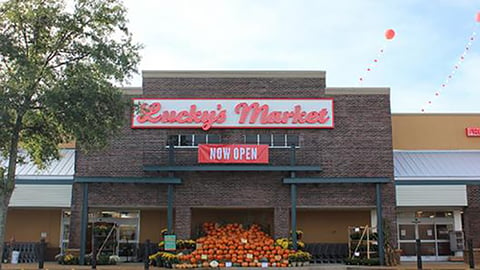What Retailers Should Take Away From the Fate of Earth Fare
Last week, natural and organic grocery chain Earth Fare announced that it will close all of its stores and begin liquidating its inventory, fixtures and properties. Without two other similar announcements made within so many days of Earth Fare’s, it would be easy to dismiss this news as just another story about just another grocery chain shutting down in a highly competitive retail environment.
However, a closer look at what’s occurred reveals a timely conundrum: How does a grocery chain boasting more than 4,000 non-GMO items store-wide, along with more than 1,000 gluten-free products on shelf, fail in a marketplace where the demand for healthier foods is only increasing? The answer: easy.
It’s a cautionary tale with important lessons for those who want to succeed in today’s marketplace and avoid the same fate of a grocer that, as late as April 2019, had plans to double its store footprint by 2024.
Avoid the “middle ground;” It’s unsustainable
Retailers have to make a choice — compete on price or experience. To compete on price, there has to be a concerted focus on keeping costs low, and the economics have to be in place that enable being the value player in the market.
As a smaller chain operating small-footprint stores, the economies of scale that Earth Fare needed — in procurement, marketing, distribution, sales per employee hour, etc. — to allow for more competitive pricing were largely unattainable. So, as this area of the grocery business became increasingly commoditized (and populated with lower-price competitors) its ability to compete on price was, for all intents and purposes, eliminated.
Differentiation is essential And must be maintained
When Earth Fare opened in 1975 as “Dinner for the Earth,” selling bulk goods and health supplements in the very hip community of Asheville, N.C., it was in a unique position. And, when it expanded into a full-service store and became Earth Fare in 1994, it was still largely distinct from other retailers in the grocery space.
Over time, however, the channel filled with competitors of every size — including both specialized retailers and larger traditional grocers with seemingly unlimited budgets — offering shoppers healthier assortments. As a result, the niche that Earth Fare had carved out narrowed and, ultimately, disappeared.
More Information
What was once a differentiator became a standard; it’s happened before and it will happen again. In today’s rapidly evolving grocery ecosystem, retailers must continue to key on differentiation — however and whenever they're able. That's no easy feat in this constantly morphing marketplace, but finding a way to stand apart from the competition has to be an equally constant effort.
Optimized omnichannel engagement is essential
Earth Fare’s initiative to localize each store as much as possible through its Community Advisory Boards program was, by all measures, a creative and admirable effort to enhance the in-store experience for its shoppers. But while creating a market-match between a store location’s service area and the brick-and-mortar environment is essential, it’s not enough in today’s omnichannel retail environment.
Shoppers expect a seamless omnichannel experience when shopping for groceries, and if they can’t find it with one retailer, they won’t hesitate to seek it from another. They’re “digitally demanding,” and retailers that want to capture their loyalty have to have a promotional, media and ecommerce strategy in place that accommodates consumers' desire for value, inspiration and convenience.
According to the press release from Earth Fare announcing its closure, the company tried "numerous strategic initiatives aimed at growth and expansion and enhancing the customer experience" in recent years. But despite these efforts and its genuine commitment to “being a place of wellness” for its customers, its staff and society, Earth Fare couldn’t survive. Its demise should serve as an important lesson to retailers looking to avoid the same fate.







